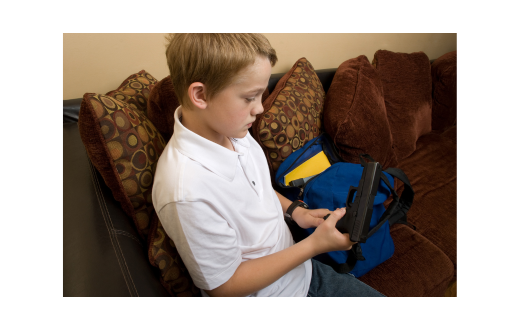In a world where children are exposed to various forms of media, it’s crucial to address the topic of guns and firearm safety. Whether through movies, video games, or news headlines, guns are a part of our society, and it’s essential to educate children about responsible firearm handling. By teaching kids about guns, we can instill a sense of respect, understanding, and safety that can help prevent accidents and promote responsible behavior. In this blog post, we’ll explore the importance of teaching children about guns and responsible firearm handling, along with some key strategies for imparting this knowledge.
Start with Open Communication:
Open and honest communication is the foundation of any educational endeavor, especially when it comes to sensitive topics like guns. Create an environment where children feel comfortable discussing their questions, concerns, and curiosities about firearms. Encourage dialogue, actively listen to their thoughts, and address any misconceptions they may have. By fostering an open line of communication, you can ensure that children receive accurate information and dispel any myths or dangerous ideas they may have picked up elsewhere.

Age-Appropriate Education:
When teaching kids about guns and responsible firearm handling, it’s crucial to tailor the information to their age and maturity level. Younger children can begin with the basics, such as distinguishing between real and toy guns and understanding that guns are not toys. As children grow older, you can gradually introduce more detailed information about firearm safety, including the potential dangers and the importance of responsible behavior.
Emphasize the Cardinal Rules of Firearm Safety:
Teach children the cardinal rules of firearm safety, which are essential guidelines for responsible gun handling:
a. Treat every firearm as if it is loaded: Emphasize the importance of never assuming a firearm is unloaded and always treating it with respect and caution.
b. Keep the firearm pointed in a safe direction: Teach children to point the muzzle in a direction that would cause minimal harm if an accidental discharge were to occur.
c. Keep your finger off the trigger until ready to shoot: Instill the habit of keeping fingers off the trigger until the child is ready to fire the gun intentionally.
d. Be sure of your target and what is beyond it: Teach children to be aware of their surroundings, to identify potential risks, and to understand that they are responsible for where their bullets may travel.
Secure Storage and Restricted Access:
Teach children about the importance of secure firearm storage and restricted access. Emphasize that firearms should be stored unloaded and locked away in a secure location, such as a gun safe or lockbox. Explain that access to firearms should be limited to responsible adults who have received proper training and understand the rules of firearm safety.
Role Modeling Responsible Behavior:
As an adult, it’s essential to lead by example and practice responsible firearm handling. Children are keen observers, and they learn by imitating those around them. By demonstrating responsible behavior and a respect for firearms, you can greatly influence their understanding and attitudes towards guns.
Teaching children about guns and responsible firearm handling is a vital aspect of ensuring their safety and the safety of those around them. By providing accurate information, fostering open communication, and emphasizing the cardinal rules of firearm safety, we can equip children with the knowledge and understanding needed to make responsible choices. Remember, education and open dialogue are key when it comes to cultivating a safe and informed approach to guns. By prioritizing safety first, we can help prevent accidents and promote responsible behavior in our children’s future.

